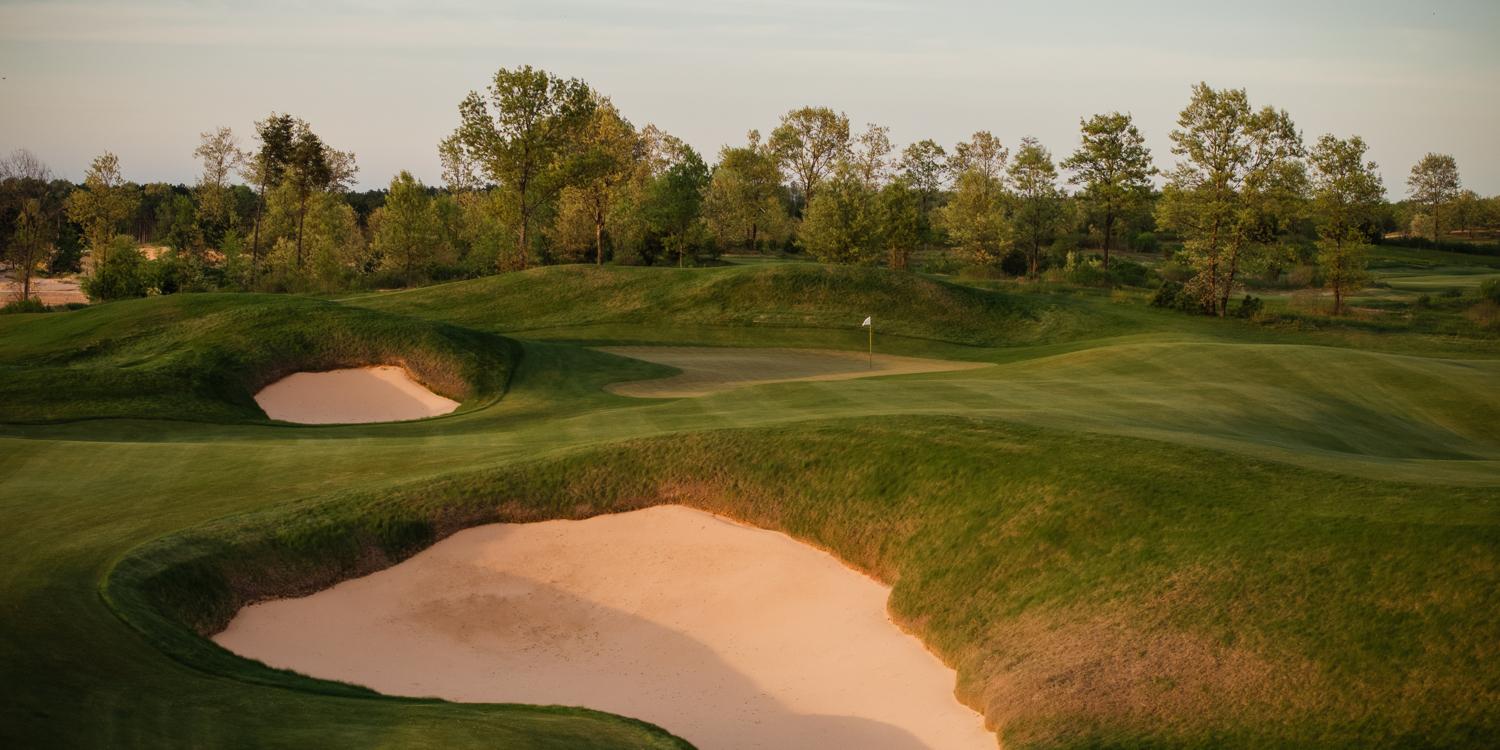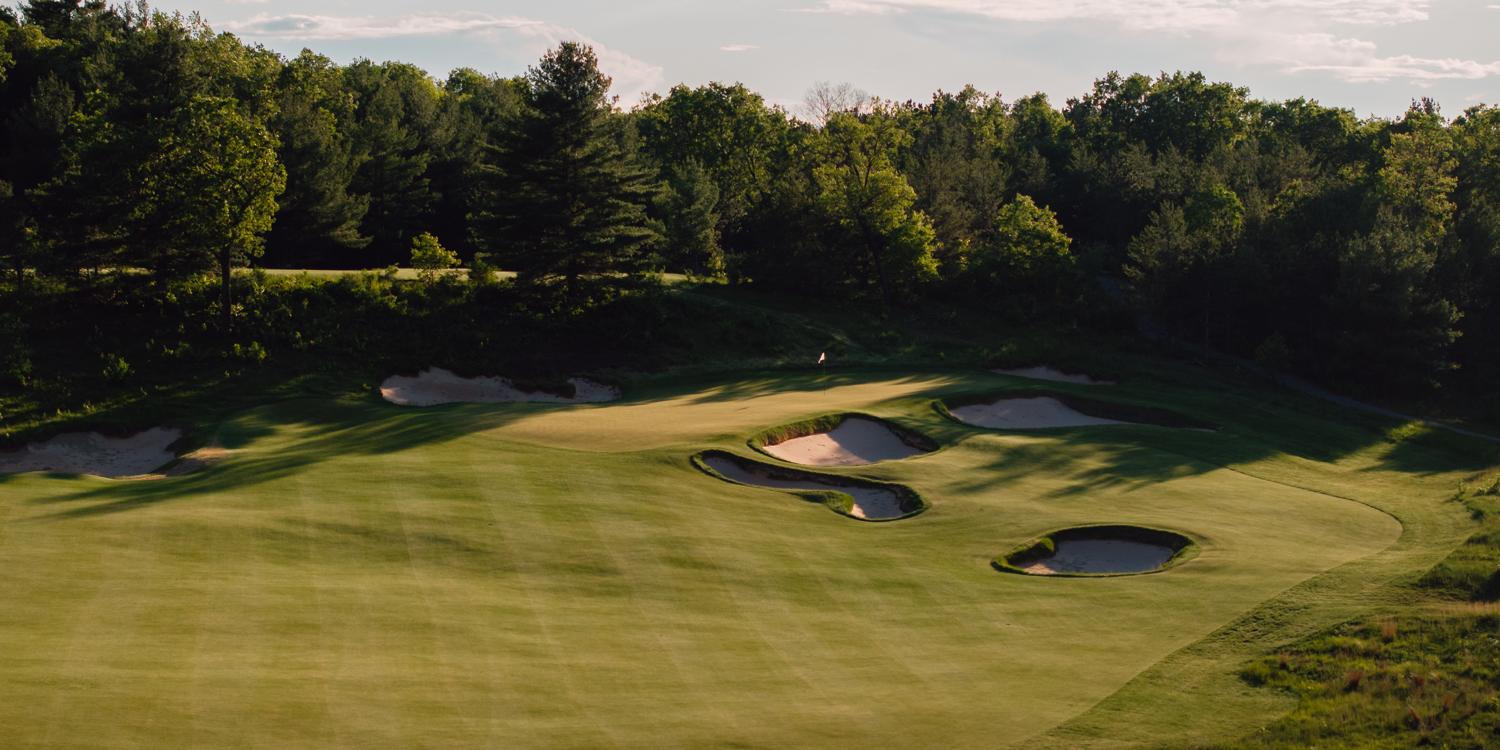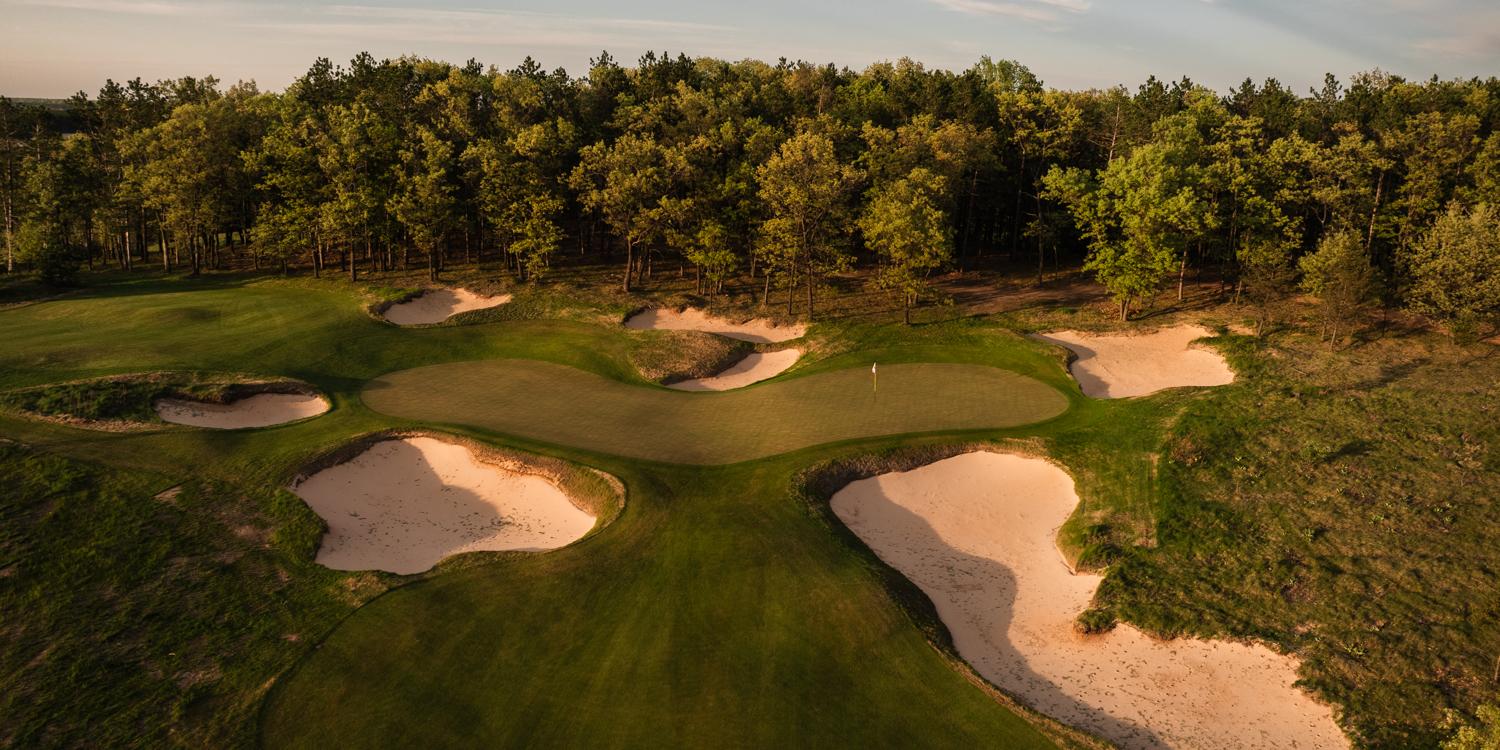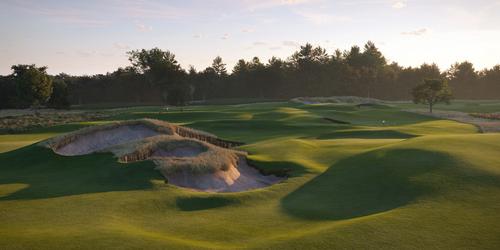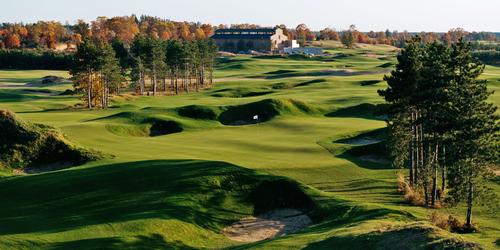Photo Credits: Brandon Carter - Sand Valley Resort
Sedge Valley at Sand Valley Resort Opens
Sly Like A Fox
By Matt Tevsh
When the Keiser family started its Sand Valley Golf Resort journey over a decade ago, purchasing 1,700 acres of red pine tree plantation land, there was one part of the property early on that seemed destined to be the first course in a potentially larger plan.
As such, that specific plot in Central Wisconsin, which is now the western part of the current development, was the first site to be cleared. As Michael Keiser Jr. (who owns and operates Sand Valley with brother, Chris) remembers, it in some ways was the best site on what they initially purchased.
For various reasons, however, it had gone essentially untouched. The Keisers went ahead and built three other sandy, links courses (and a short course) on different sites near the location. But it was only a matter of time before Michael Jr. came back to his initial attraction.
The opening of Sedge Valley this summer has finally fulfilled his instinct. The course is the centerpiece of the Sedge Village development at Sand Valley which continues to be arguably the Midwest's hottest golf resort.
If variety is the spice of life, then the newest course at Sand Valley fits the Resort bill nicely. Sedge Valley is much different than any of the other "regulation" courses at the Resort. The most obvious difference is on the scorecard where the 18-hole routing tips out at just over 5,800 yards as a non-traditional par 68. Unlike Mammoth Dunes and Sand Valley (the first course at the Resort), sand blowouts and large sand waste areas do not bracket the fairways and dominate the landscape. The greens are smaller - the biggest green (No. 3) is about the same size as the smallest at Mammoth. Bunkers are more sunken and strategically placed with natural-looking edges. Holes are more classically styled and the setting is more intimate, by nature and design.
"We wanted to build a precision course - par-3s and drivable par-4s," said Michael Jr. in an interview a couple years before the course was built, saying he and his brother Chris were looking at alternative routing to balance the options at the Resort.
They found a perfect partner in Tom Doak. One of the world's top course architects oversaw the down-to-the-inches recreation of the Lido course at the Resort (which opened last year) and proved to be another perfect fit for a different concept with Sedge, too. This project would offer Doak a crack at an original design he had always wanted to pursue. On past trips to the United Kingdom to visit some of the old inland links courses, both the Keisers and Doak were drawn to the shorter heathland courses that have withstood the test of time. Among the courses they mentioned - Swinley Forest (6,431 yards, par 69), Rye (variable par 68 to 75 on two courses) and West Sussex (6,333 yards, par 68) - served as templates. Could they do something similar at Sand Valley? As it turns out, yes.
That initial plot of land worked well for the vision. Doak sort of reverse engineered the plan for the new course. Par or length was never really paramount. Finding great golf holes around the green sites was. "When you don't have to think about stretching a course to 7,300 yards, you can start thinking about finding cool green sites, without worrying about how close together they are," began Doak. "The sixth at Sedge Valley is a 290-yard par-4 with a skinny shelf of a green. It's the kind of hole that actually gets long hitters into trouble because they feel compelled to attack even when it's not wise.
"So the overall design does allow us to focus more on the green sites themselves. I don't have to worry as much about a severe slope at the edge of the green being "unfair" if you're hitting a relatively short approach into it. You look for great green sites. We found them here, and it's a credit to Michael and Chris that they have allowed us to build around those great sites."
There are at least two, maybe three, potentially drivable par-4s in the routing. One is the finishing hole. It can play anywhere from 242 to 343 yards but that tells nothing of the story. The split level fairway is generous, divided by a large hillside supporting a bunker that would get a wink from the Himalaya bunker at Royal St. George's. The green is shaped like a boomerang and is surrounded by large banks and hills giving it a punchbowl feel. From different fairway angles, depending on hole location, the flag may not even be visible. A big drive to the upper fairway has a chance to get to the green depending on the roll and wind direction.
Sedge has eight par-4s under 400 yards from the tips but also four over 400 yards. The toughest hole may be No. 3 (455 yards) with its massive fairway width but a hidden green off the tee (and on many approach shots). The only par-5, No. 11, can play up to 542 yards. There are five par-3s.
Three of the par-3s come in a stretch of four holes on the outward nine, which plays to a par 33. Par goes 3-4-3-3 on holes 5-8 and yardages play 136-294-144-227. Those holes loop together on an intimate nook in the routing. And all the green shapes are unique - from the kidney bean-shaped fifth to the punch bowl feel down a runway at the eighth.
"One of the things that makes Tom's routing so different in addition to the total length and the par is the amount of contour that he has within the playing surfaces," said Michael Jr. in an interview with Golf.com. "His green sites are so natural. He found I think the most natural green sites at the Resort that we're really just sitting there and just added bunkers."
Like the other courses at Sand Valley, the turf at Sedge is fescue and the course intends to play firm and fast despite not always having a links look. Michael Jr. also spoke of letting the land and the prairie speak for itself. Instead of the sand features dominating the look like at Mammoth Dunes and Sand Valley, the native grasses and the sedge set the table.
"The heathland courses built around London in the early 1900s were the first great inland golf courses, and Sedge Valley will integrate some of those characteristics - native ground cover as a strategic element, for instance," said Doak. "This property has sand, open expanses, good terrain and intriguing green sites - the fundamentals of holes that stand up over time."
Perhaps that is why Sand Valley boasts on its web site that the newest course on property has the "oldest soul of the bunch." It was made to pull golfers in and engage their focus. And it should be a great course for matches amongst buddies on a trip - the vibes that Sand Valley always sends off.
"One of the most charming parts of the game is just the simple social interaction - that's why strategic courses that lend themselves to match play are so much fun," said Doak. "You lose something when you have to design to the longest and most overpowering players. I don't think you have to build a course that separates players by thousands of yards on the scorecard. A truly great course invites different styles of play, but also encourages a shared experience. I think it's still possible to make it work, and I believe Sedge Valley will show that."
And back to that total yardage Doak alludes to for a moment. Like the 17-hole short course - the Sandbox - at the Resort, in no way is Sedge Valley meant to be a pushover. It certainly offers a stiff challenge against par for all golfers. Take it from Tom Ferrell, VP of Media and Communications for Dream Golf (www.dreamgolf.com).
"Do not be deceived by 5,800 yards, par 68," he said. "You're going to be asked to hit some great golf shots out there."
More Information »
Revised: 07/02/2024 - Article Viewed 6,920 Times
- View Course Profile
About: Matt Tevsh
![]() Matt Tevsh has been a freelance sports journalist since 1996. He has been published in multiple periodicals including Midwest Golfing Magazine and on various websites including GolfTrips.com. He is an avid golfer and a former member of the Golf Writers Association of America.
Matt Tevsh has been a freelance sports journalist since 1996. He has been published in multiple periodicals including Midwest Golfing Magazine and on various websites including GolfTrips.com. He is an avid golfer and a former member of the Golf Writers Association of America.

